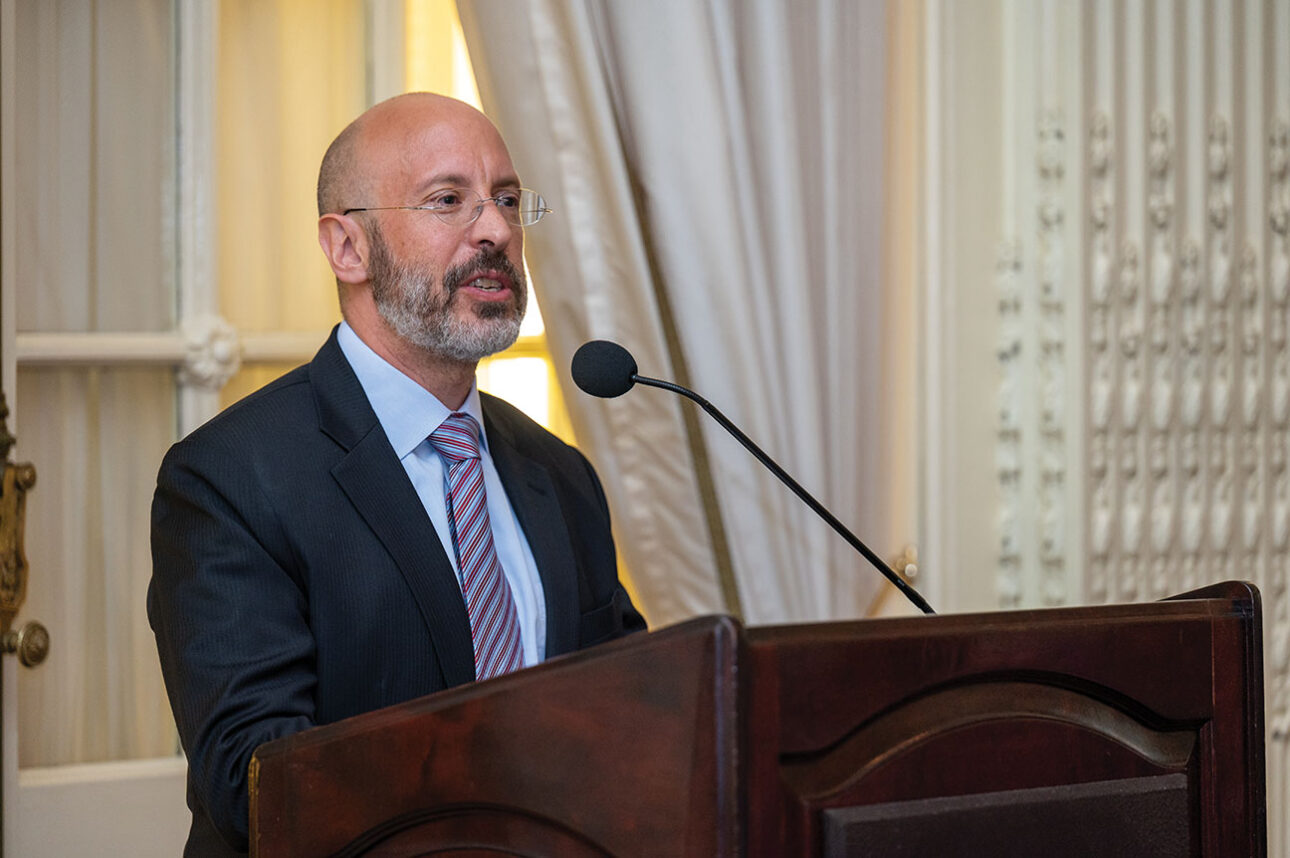Large Jewish cemetery in Warsaw is vandalized
The fence of a Jewish cemetery in Warsaw considered to be one of the largest in Europe was defaced.
The fence of a Jewish cemetery in Warsaw considered to be one of the largest in Europe was defaced.
The City of Warsaw has agreed to return and preserve 1,000 Jewish headstones that were used to construct a recreational facility inside one of the city’s parks.
Archaeologists in Warsaw discovered fragments of two human skeletons that likely were buried there during the Polish city’s ghetto uprising.
For most Jewish readers, I suspect, the phrase “Warsaw uprising” refers to the stirring last stand of the Jewish ghetto fighters in 1943. But there was quite another upwelling of armed resistance in Warsaw a year later, and that’s the focus of “Warsaw 1944: Hitler, Himmler and the Warsaw Uprising” by Alexandra Richie (Farrar, Straus and Giroux, $40.00), an account of the doomed effort at self-liberation launched by the Polish Home Army against the Nazis even as the Red Army sat and watched on the far side of the Vistula.
Russia will contribute up to $1 million to the Auschwitz-Birkenau Foundation for the conservation and maintenance of the site of the former Nazi concentration camp.
In the early morning of Oct. 12, 1941, German authorities ordered the Jews of Stanislawow, Poland, to report to the town square. Six-year-old Robert (Bob) Geminder huddled there with his mother, grandmother and brother, George. The group of approximately 20,000 Jews was then marched to the nearby cemetery. Bob and his family, among the early arrivals, were shoved toward the cemetery’s back wall, where they crouched down. “If you stood up, they would shoot you,” Bob remembered. Meanwhile, people in the front were marched forward toward large pits in the ground, then shot. As they fell into the gaping earth, more Jews were ordered forward. This systematic killing continued all day, until falling snow and darkness halted the massacre of 12,000 or more.
Poland\’s Jewish community has about a one month supply of kosher meat left, following a ban on ritual slaughter that went into effect at the beginning of the year.
My daughter, Ilana, then a young college student, asked if she could go with me to the opening of the United States Holocaust Memorial Museum, on April 22, 1993 (the date was tied to the Warsaw Ghetto Uprising’s 50th anniversary). I said: “I will be leaving very early.” She responded: “I’ll be up.”
Polish police arrested a man suspected of intimidating a group of religious Israeli teenagers at the Warsaw airport.
\”Abe, go. You’re young. You’re not afraid to work.” Bronia Rosenstein, Abe’s older sister, urged him to answer a call for strong, healthy men to work outside the Lodz ghetto. It was November 1940. Abe was 21 and for nine months he had been living in one small room with his parents, two sisters and one brother. Abe signed up to work. Living conditions in the ghetto were deteriorating, and people were dying from hunger on the street daily. On the day he reported for work, he spotted his mother standing behind a barbed-wire fence, crying. “It was the last time I saw her,” he said.





 More news and opinions than at a Shabbat dinner, right in your inbox.
More news and opinions than at a Shabbat dinner, right in your inbox.